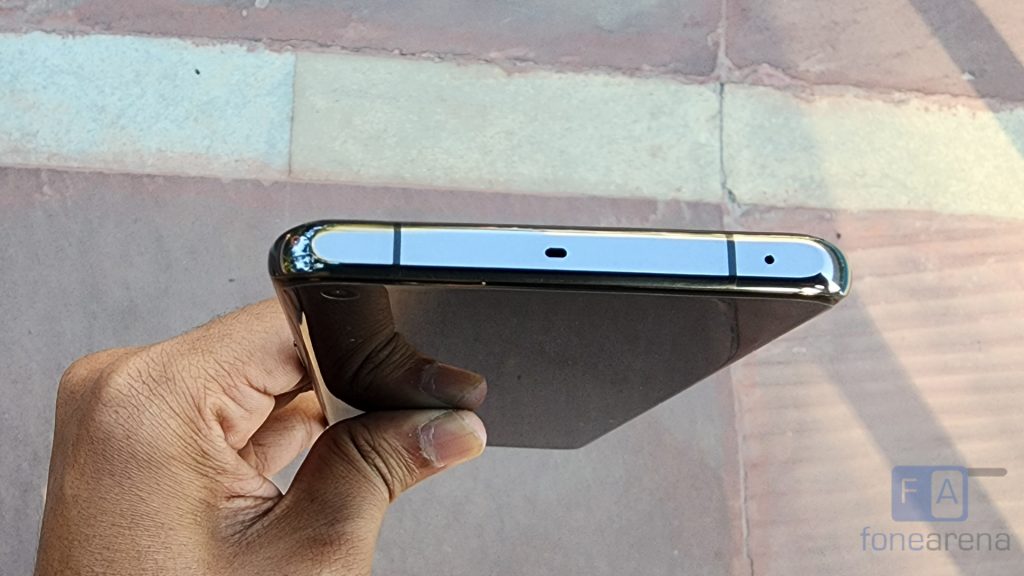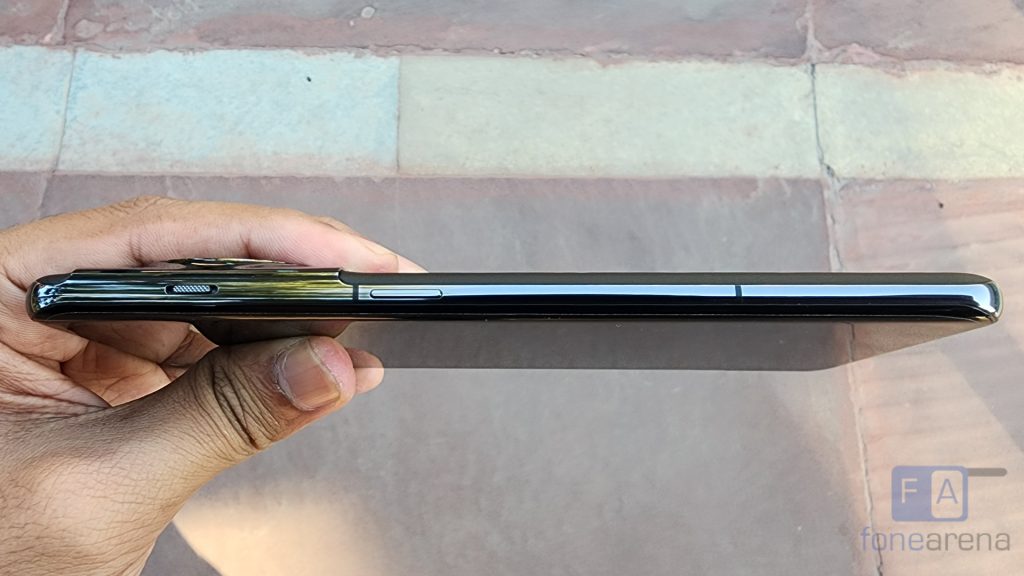After its launch in China, OnePlus has launched its latest flagship, the OnePlus 11, in India. Like every OnePlus flagship, it features the latest processor, a unique new design, camera upgrades and fast charging. Interestingly, this is the non ‘Pro’ OnePlus flagship and that means there are a couple of compromises too. Are these compromises the right decision, or are they a dealbreaker? Read on in my review of the OnePlus 11.
Box Contents

- OnePlus 11 12GB+256GB version in Titan Black colour
- 2-pin 100W SuperVOOC charger (USB Type-A port)
- USB Type-A to Type-C cable
- SIM ejector tool
- Black TPU case
- User Guide and Warranty information
Hardware and Design
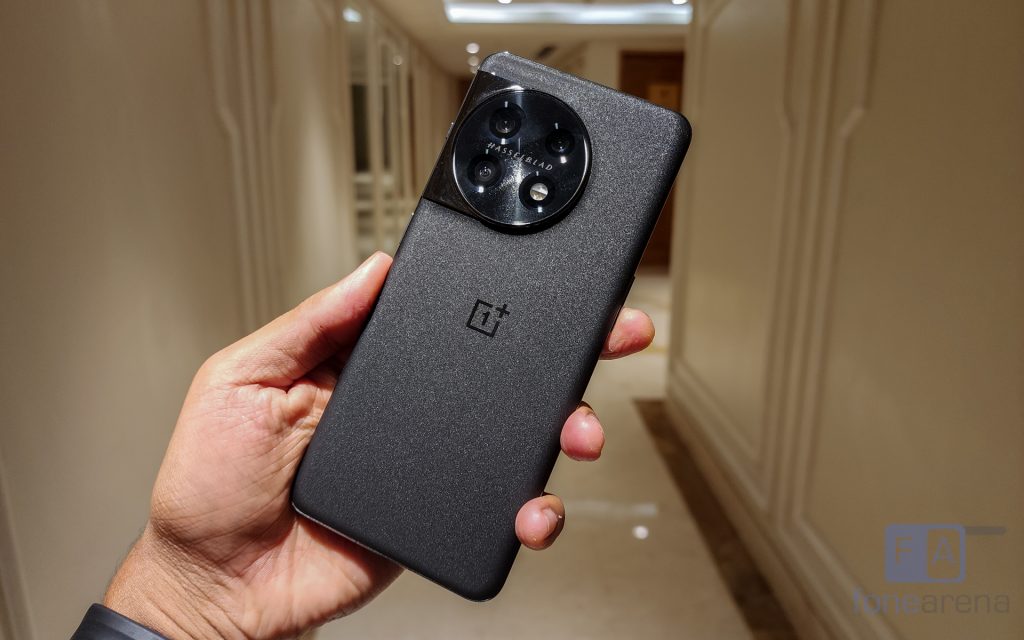
As is with every OnePlus flagship smartphone, the design of the OnePlus 11 has been updated for the year 2023. The updates are mostly limited to the rear camera module, however. While the arrangement of the rear cameras and flash has not changed, the camera bump itself has a circular shaped protrusion this time around. It blends into the side rails smoothly just like the OnePlus 10 Pro, with a glossy finish that continues to attract fingerprints.

The rear glass panel is made out of Corning’s Gorilla Glass 5 material, and it features a smooth, sand-blasted finish on the Titan Black model. It feels premium to the touch, and it also does an excellent job of hiding fingerprints. It is a bit slippery, but since the railings are made out of metal, the phone can be gripped in the hand with confidence. The OnePlus 11 also has great ergonomics with curves and soft edges in the right places and no obtrusions, ensuring a comfortable fit in the hand. The weight distribution is good too.
The rest of the device is pretty much identical to the OnePlus 10 Pro. The volume rocker is on the left edge, and the power button along with the alert slider is on the right edge. On the bottom, there is a USB Type-C port, a SIM slot and speaker grill. The top is mostly bare except for a microphone hole. The lack of IP68 ratings suck, but to their credit, the phone does have the rubber seals around the SIM slot. This means that the phone will do a decent job of resisting water, and it’s just not officially certified for it.
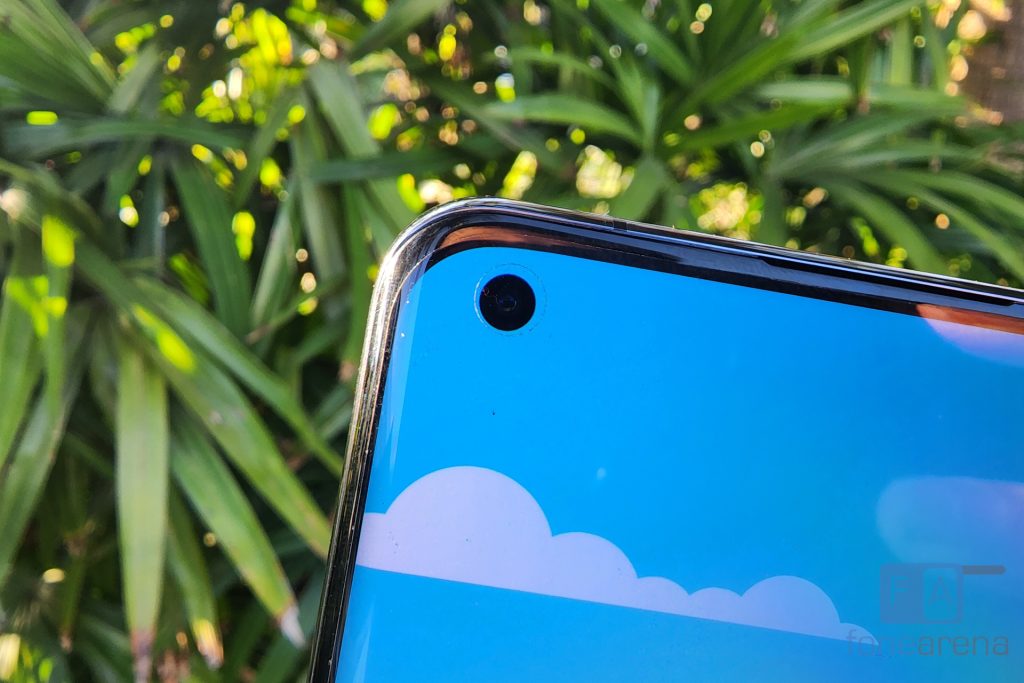
The display is another aspect that is identical to the OnePlus 10 Pro. It has a punch-hole cut out on the left corner, and I wish they would move it to the centre. The glass is still curved on both edges, and the bezels on all sides look identically thick. For protection, it has Corning’s Gorilla Glass Victus.
Display and Audio

The OnePlus 11 has a 6.7-inch QHD+ 20.1:9 Super Fluid AMOLED LTPO display with resolution of 3216×1440, a supported refresh rate of 1-120Hz and support for Dolby Vision. The display is bright and beautiful, and the colours are vibrant with good contrast. The panel is 10-bit capable and supports the P3 colour gamut. The addition of Dolby Vision is also great for watching content in supported OTT platforms.
Among the devices in its price bracket, the OnePlus 11 has one of the best displays in my opinion. Watching content is a great experience and games look fantastic. Thanks to its LTPO technology, the display can quickly switch its refresh rate for buttery-smooth animations while also being power efficient for its Always-on-display.
As expected, the phone features dual ‘Reality’ speakers that get pretty loud with little-to-no distortion. It cannot quite match up to the level of the Samsung Galaxy S23 or the iPhone 13, but honestly I have no complaints. Support for Dolby Atmos audio is also a nice touch.
Camera
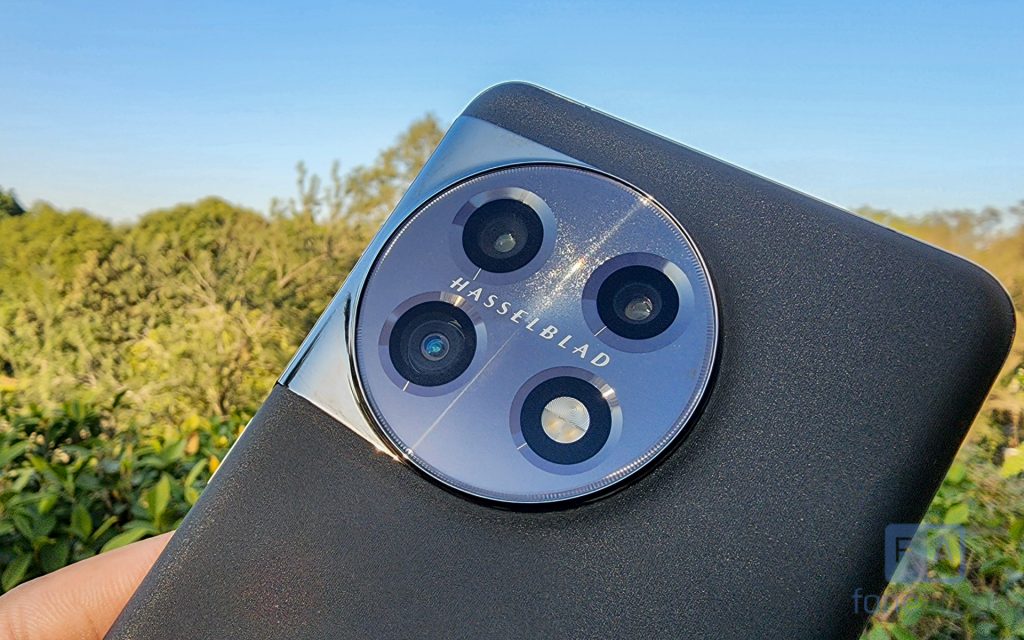
OnePlus’ partnership with camera-maker Hasselblad has reached its third and final year now, and the OnePlus 11 features their third generation Hasselblad camera system. The camera hardware itself has been upgraded, which now includes:
- 50MP Sony IMX890 1/1.56-inch sensor with an f/1.8 lens and OIS, EIS
- 48MP Sony IMX581, 1/2 inch sensor with 115° field-of-view
- 32MP Sony IMX709 1/2.74 inch sensor for portrait tele lens
- 16MP Sony IMX471 front facing sensor with ƒ/2.45 lens
Here are some camera samples:
Starting with the primary rear sensor, I think it is one of OnePlus’ best camera till date. In well lit conditions, the photos look pleasingly natural and have plenty of detail. Colours have a good amount of contrast, and they aren’t over-saturated. The auto HDR was great and produced some impressive shots. I did notice a small issue with white balancing, but I expect it to be fixed in future updates.
The low-light photos were also good, although I did notice that the camera would miss getting the right exposure levels occasionally. Noise removal was good, and the phone managed to retain a lot of details.
The ultra-wide does produce some good shots, but there were inconsistencies in the processing. The macro mode on the other hand was a complete hit or miss. Often I would prefer the shots from the primary wide angle camera.
The more interesting camera is the third 2x Hasselblad portrait camera. It is designed to simulate a Hasselblad camera fitted with XCD 30mm and 65mm lenses. The shots were pretty good, and the portrait cutouts didn’t have many mistakes. Personally though, I like the portraits from iPhone and Pixel better, but that’s a preference. The selfie camera is good too, producing clear shots in good lighting.
Overall, the camera doesn’t quite hold up to other flagship smartphones like the Pixel 7, iPhone 14 or the Samsung Galaxy S23. However, those are much more expensive, so I’d say the OnePlus 11 can hold its own.
For video, the phone supports up to 4K at 60fps or 8K at 24fps. There is also an AI Highlight mode that supports 4K resolution.
Software, UI and Apps
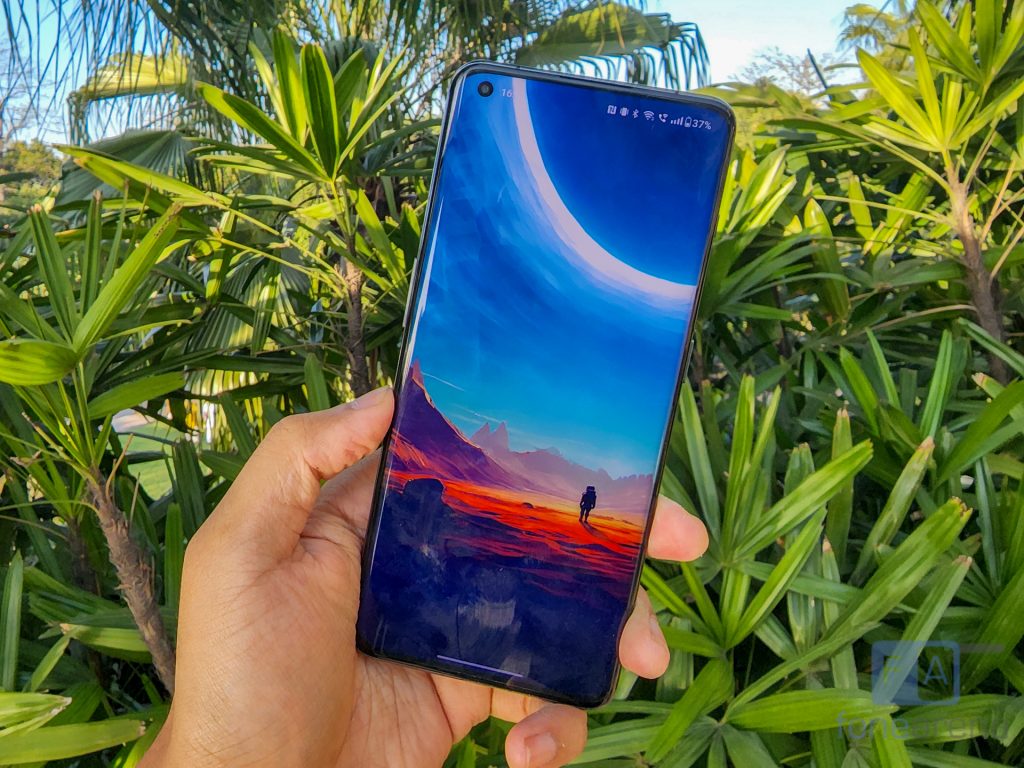
Keeping the OnePlus 11 running smoothly is OxygenOS 13, which is based on Android 13. The OS features their all-new Aquamorphic design language, along with improved convenience, reliability, and security. There are a couple of new software features such as AI System Booster, Smart Launcher, Sidebar Toolbox, Private Safe 2.0, etc.
Overall, OxygenOS 13 is smooth, lightweight and filled with neat features without a lot of bloatware. There are a couple of pre-installed apps, but they can be uninstalled. My only complaints had to do with some annoying behaviours around notifications. There is also some concern about OxygenOS becoming increasingly similar to ColorOS, but realistically it doesn’t affect the end consumer significantly. OnePlus has also promised 4 years of OS software updates and 5 years of security patches. This brings it on par with the competition in the Android space.
Fingerprint sensor and Face unlock
The OnePlus 11 features an under-display fingerprint sensor that is correctly positioned at the bottom half of the display. It uses an optical sensor instead of the ultrasonic sensor that Samsung and other brands use. The sensor works fast and reliably, and I don’t have any big complaints. You can add up to 5 fingerprints, and it offers the usual set of capabilities such as screen unlocking, app unlock and for the Private Safe.
Just like before, the Face Unlock is not as secure as the Fingerprint sensor, so I did not use it.
Dual SIM and Connectivity
It comes with Dual SIM connectivity with support for 5G networks. It supports a wide range of 5G bands including N1, N3, N5, N7, N8, N20, N28A, N38, N40, N41, N66, N77, N78, and it supports Carrier Aggregation. The phone is technically capable of connecting to Wi-Fi 7 networks, however there aren’t any supported routers now, so you can only make use of Wi-Fi 6 for now. Other connectivity options include Bluetooth 5.3, NFC, GPS (L1+L5 Dual Band), GLONASS, Galileo and Beidou.
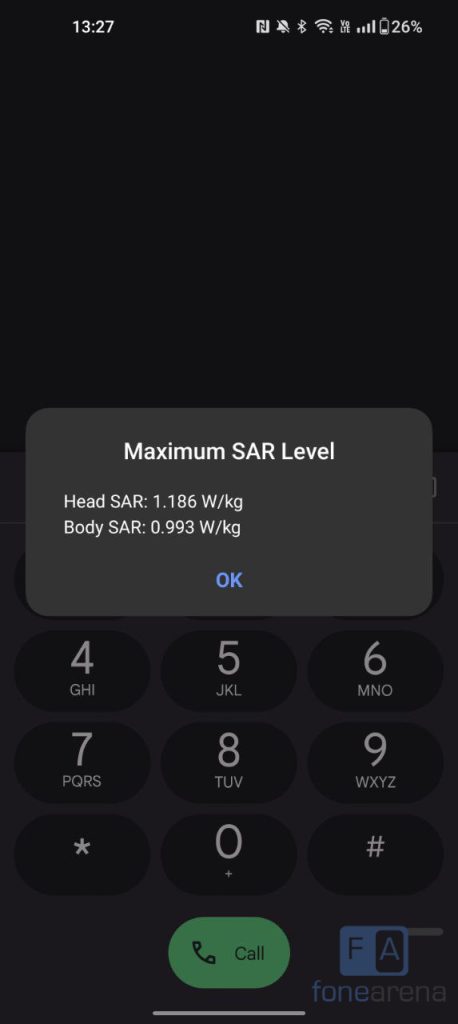
The SAR value was reported as 1.186W/kg for the Head and 0.993W/kg for the Body, which is well below the limits set by the Indian Government.
Performance and Benchmarks

Powering the OnePlus 11 is Qualcomm’s latest Snapdragon 8 Gen 2 chipset, which is the newest chip for flagship smartphones in 2023. The chip features a Kryo Prime Arm Cortex-X3-based CPU at up to 3.2GHz, 4 x Kryo Performance CPUs that has 2 x A710-based and 2 x A715-based CPUs at up to 2.8GHz and 4x Kryo Efficiency A510-based CPUs at up to 2GHz. Our model of the OnePlus 11 is spec-ed with 16GB of LPDDR5X memory and 256GB of UFS 4.0 storage.
The Snapdragon 8 Gen 2 offers a noticeable improvement over the previous Snapdragon 8 Gen 1 chipset, especially in power efficiency and GPU performance. For daily usage, the 8 Gen 2 performs excellently, and in gaming workloads, I have noticed clear improvements in frame rates. In Genshin Impact, for example, I was able to observe near 60fps over an extended period of time and the phone did not overheat either. The phone did get warm, but never uncomfortably hot. Regarding power efficiency, the battery does not drain as fast during heavy workloads and overall, I am impressed with it.
Thanks to the use of UFS 4.0 storage, apps load quickly, and they stay open in RAM for a long time too. The phone features their in-house developed “RAM-Vita” technology, which ensures sufficient RAM is always allocated for resource-intensive applications and users can also expand the RAM by up to 12GB.
Here are some benchmarks:
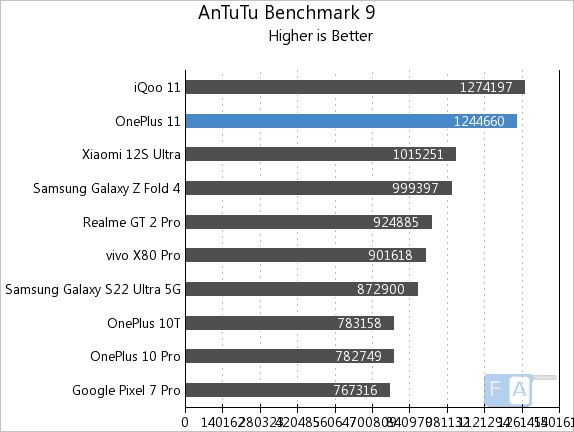
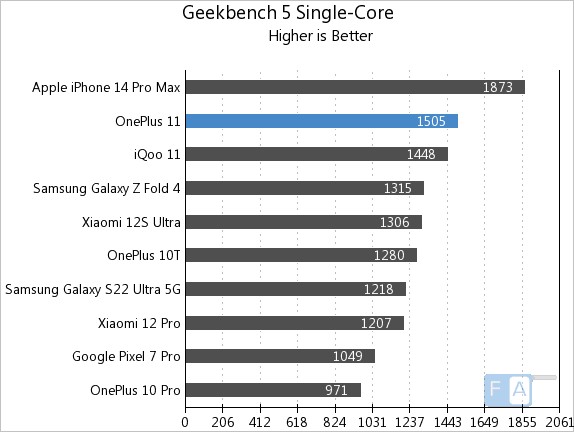
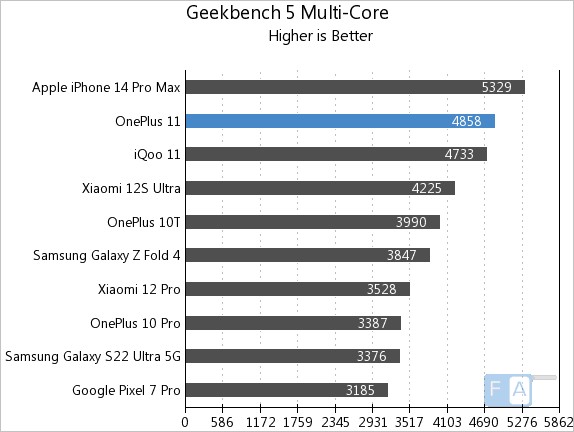
Battery Life
The battery capacity of the OnePlus 11 remains the same at 5000mAh, but the charging speeds have improved to 100W. It utilizes the same SuperVOOC technology that is present in OPPO and realme smartphones. I was able to charge the device from 3%-100% in about 28 minutes, which is quick and convenient in a pinch.
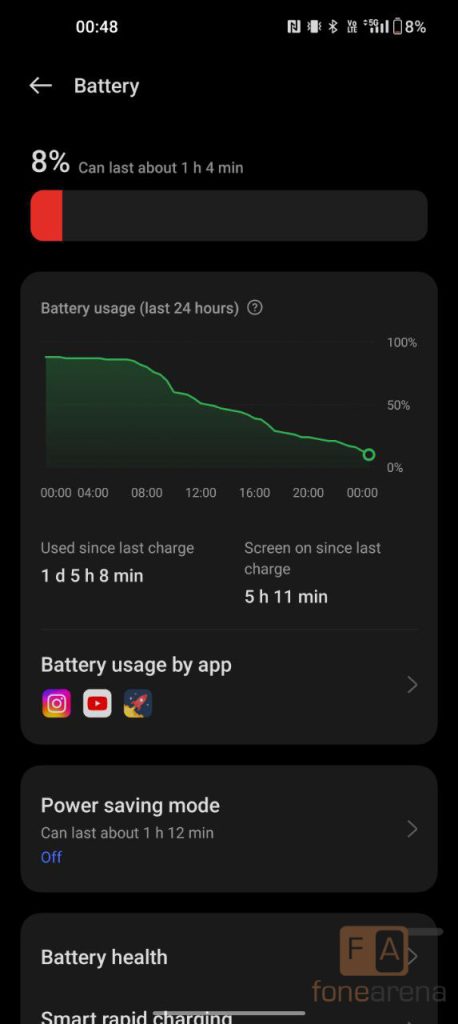
The battery life has seen a moderate improvement, mostly thanks to power efficiency gains of the Snapdragon 8 Gen 2 processor. I was able to get through a day of heavy use comfortably with a little over 6 hours of screen on time. This isn’t particularly outstanding, but with its fast charging capabilities, I was happy with the battery life experience overall.
Conclusion

The OnePlus 11 is in quite a unique position in the smartphone market. The phone offers flagship level performance, a premium build, smooth software and rapid charging capabilities. The camera is good for the price and battery life is more than adequate. There are few omissions from typical flagship smartphones, such as wireless charging and an official IP certification. However, they aren’t dealbreakers.
The price is the main factor when considering this smartphone, as it is one of the cheapest smartphones with a Snapdragon 8 Gen 2 chipset. So if you want the most amount of performance without spending extravagantly, then the OnePlus 11 is a great device. Just remember that you aren’t getting the full flagship experience.
Availability and Pricing
The OnePlus 11 5G is priced at Rs. 56,999 for the 8GB + 128GB model and the 16GB + 256GB model costs Rs. 61,999. It is available from Amazon.in, OnePlus online store and offline stores.
Pros
- Bright, beautiful display
- Flagship level performance
- Fast charging with solid battery life
- Premium build and material choices
- 4 years of software upgrades and 5 years of security patches
Cons
- No IP certification
- No wireless charging
- True telephoto camera is missing



